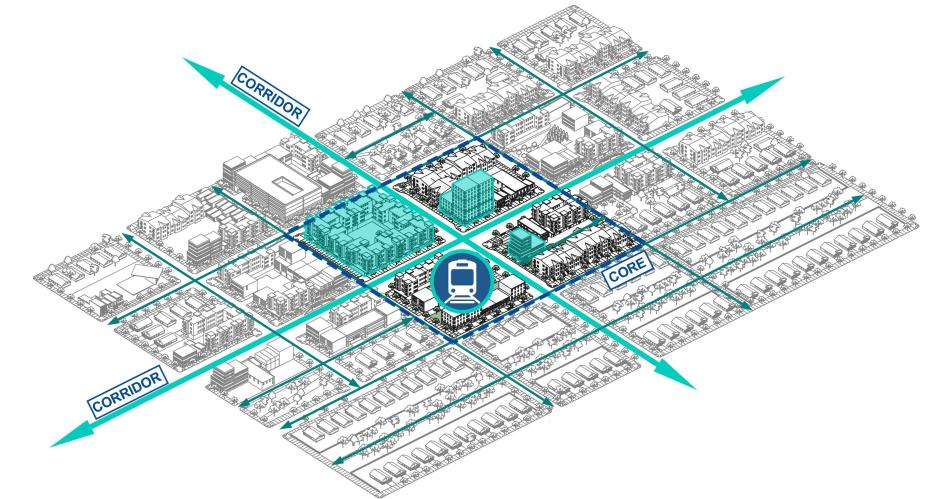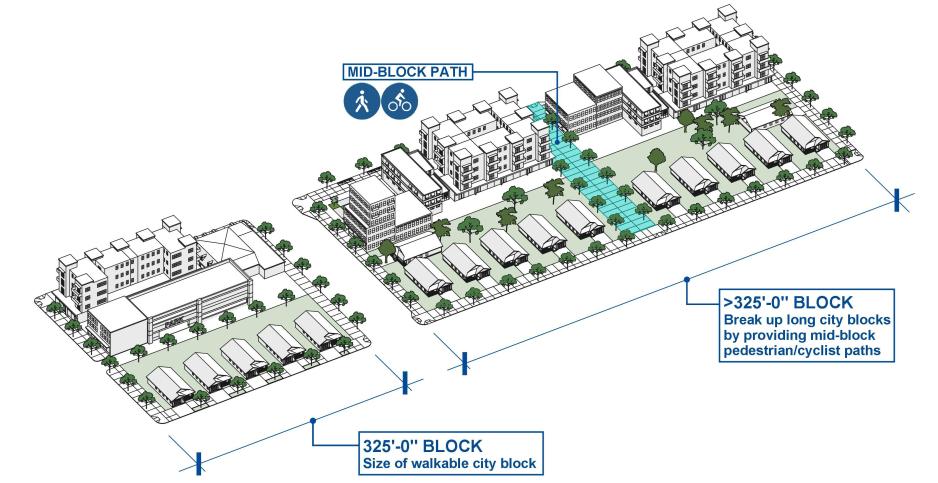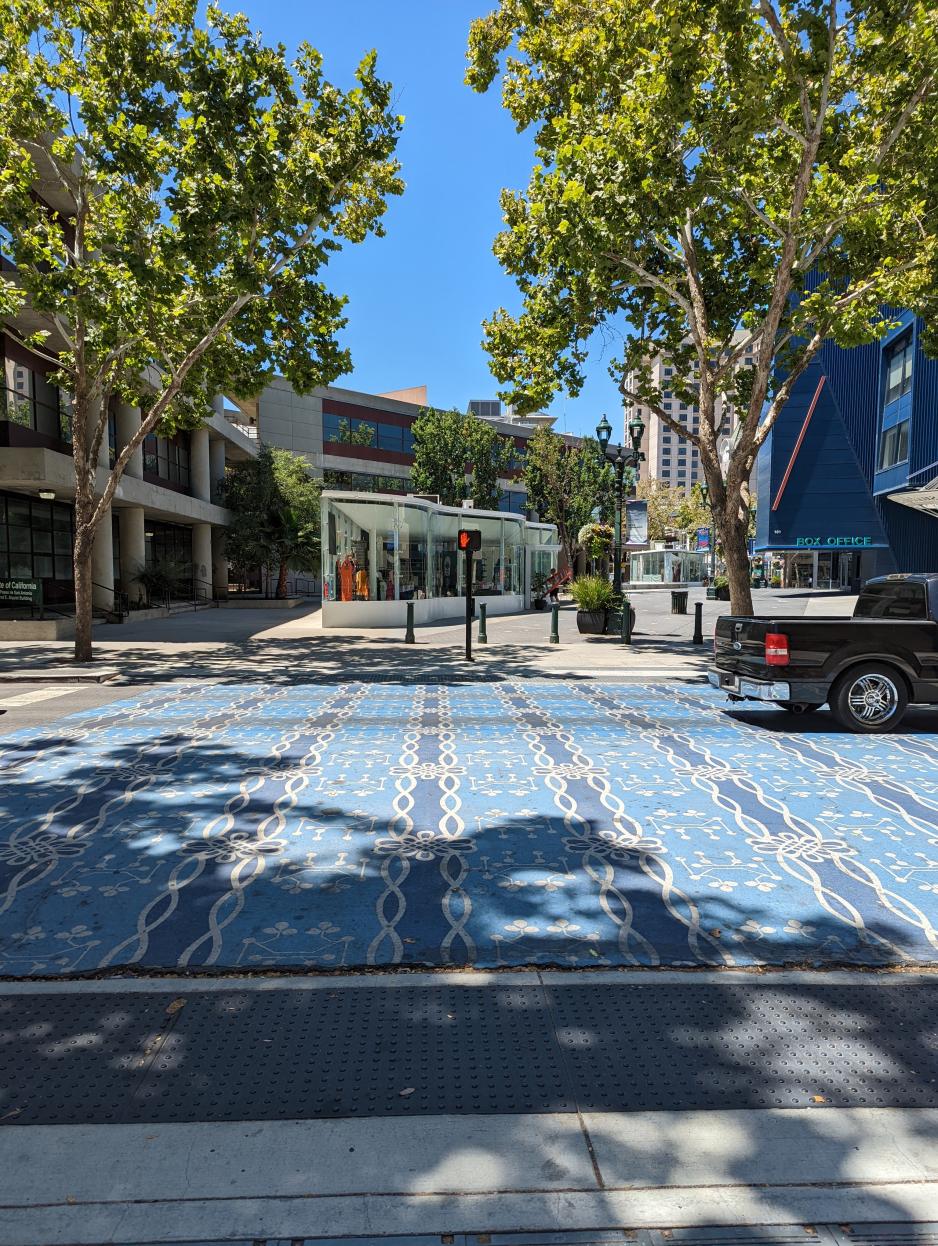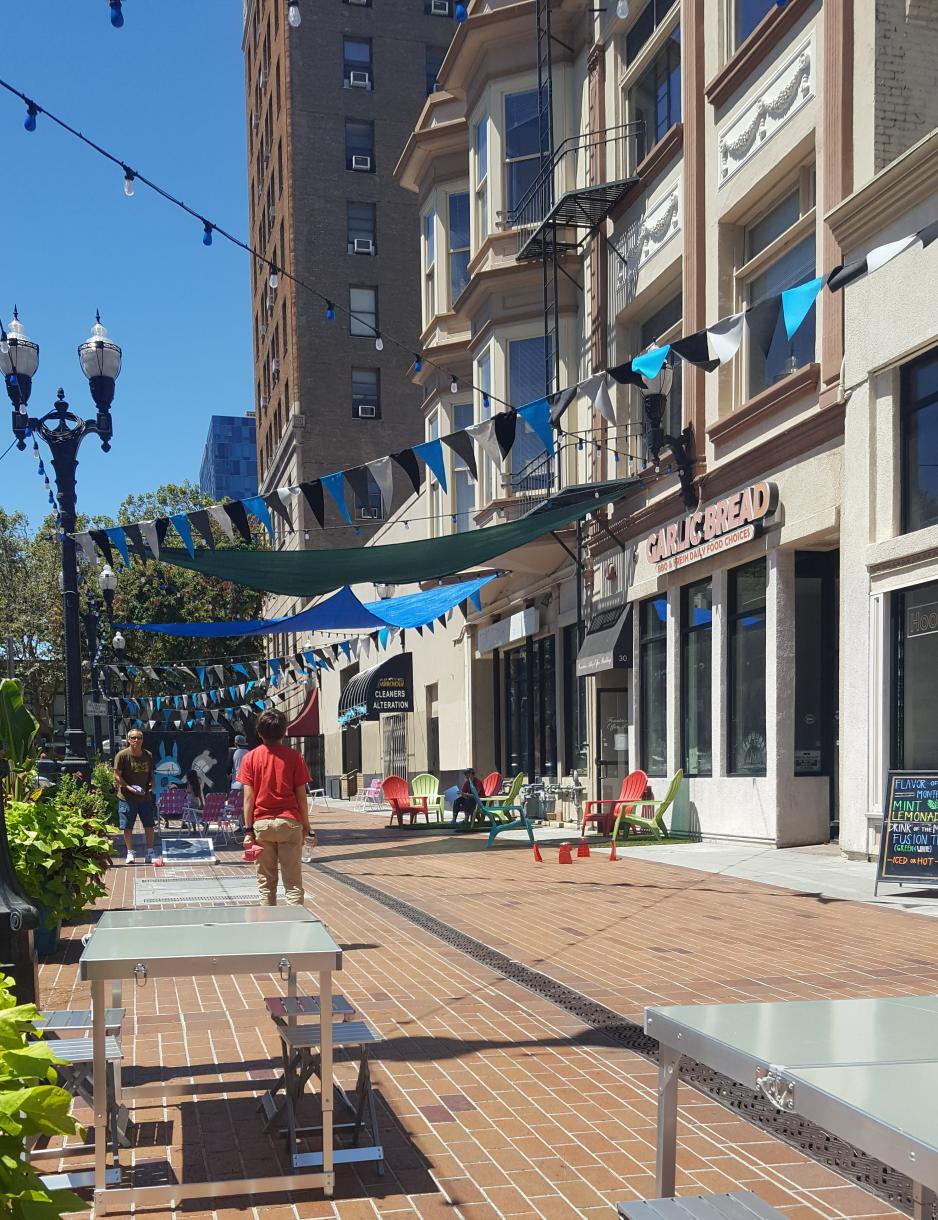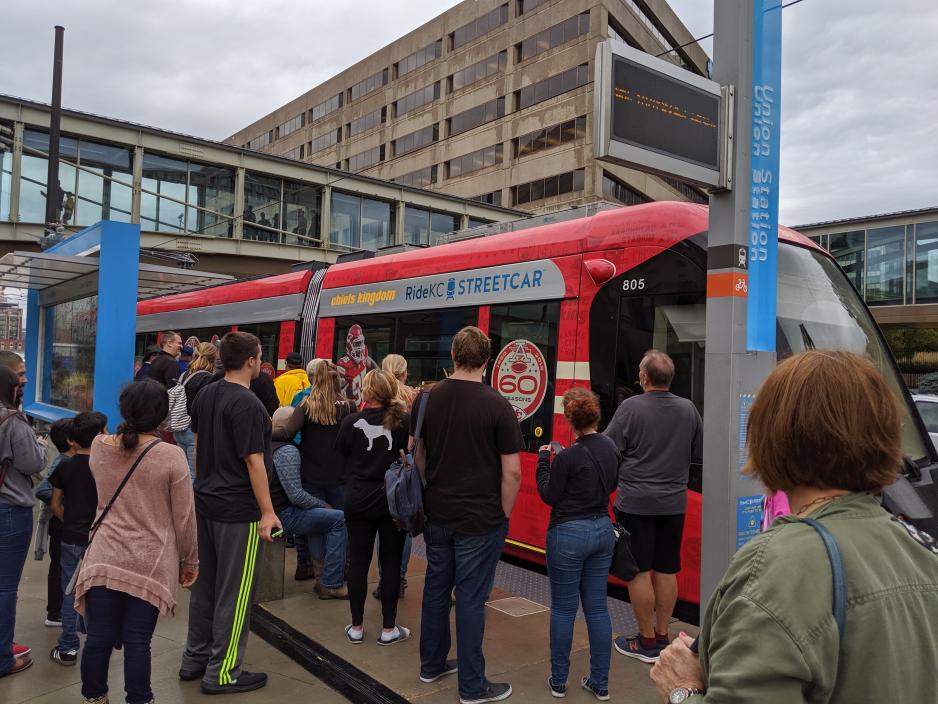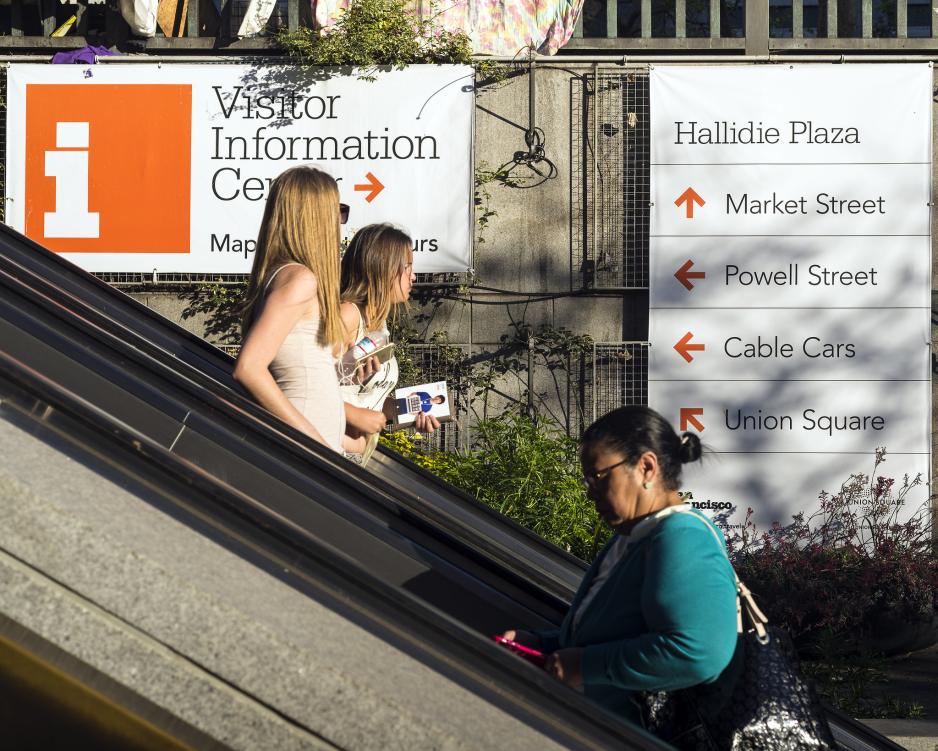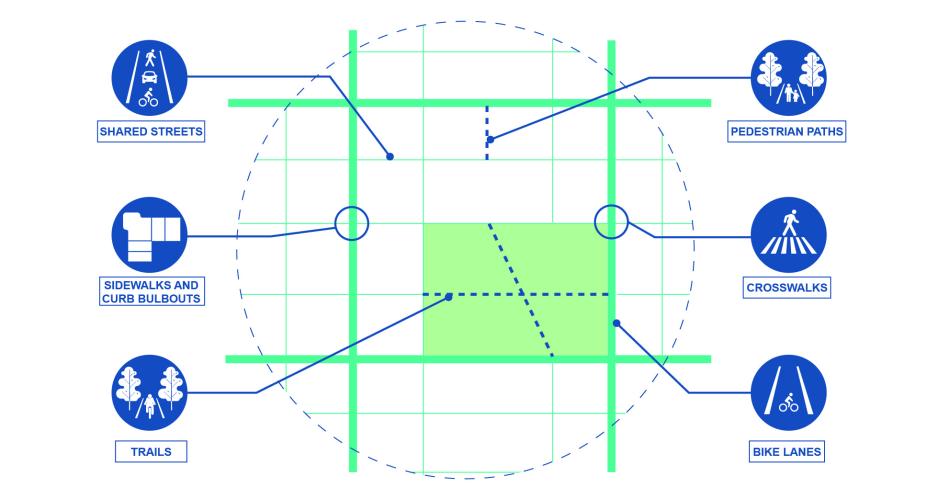Provide a fine-grained street and block pattern near transit as new development occurs and encourage infill in existing lower density areas.
Target growth to corridors, core, and station areas to provide easy access to transit and provide a compact urban footprint, to promote pedestrian traffic and public life opportunities.
Provide mid-block pedestrian connections where blocks exceed three hundred and twenty-five (325) feet (100m) in length to facilitate pedestrian connectivity and increased access to transit. It is advisable to increase the number of connections near transit stops to accommodate the anticipated pedestrian traffic flow.
Mid-block streets and paths shorten pedestrian trips and make multi-modal transportation more attractive and effective. New streets and paths should increase pedestrian connectivity and permeability, avoid dead ends, and provide increased access to transit in a direct manner.
Provide continuous pathways, signage or other visual cues to direct pedestrians through the public realm. Attention should be given to providing clear access to building entrances that may be hidden or difficult to see from streets or sidewalks. Clear, legible routes increase pedestrian safety and comfort.
Close gaps in the pedestrian and cycling networks through the addition of sidewalks, pathways, bike lanes, tunnels, bridges or other devices to overcome barriers and increase connectivity.
